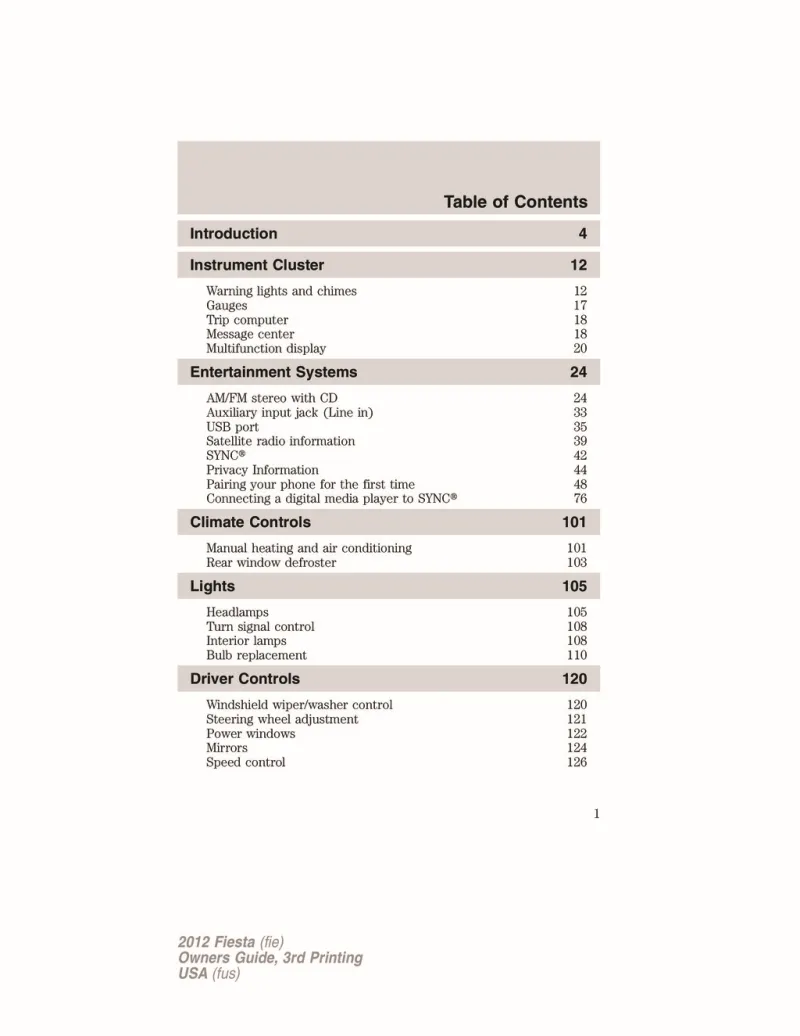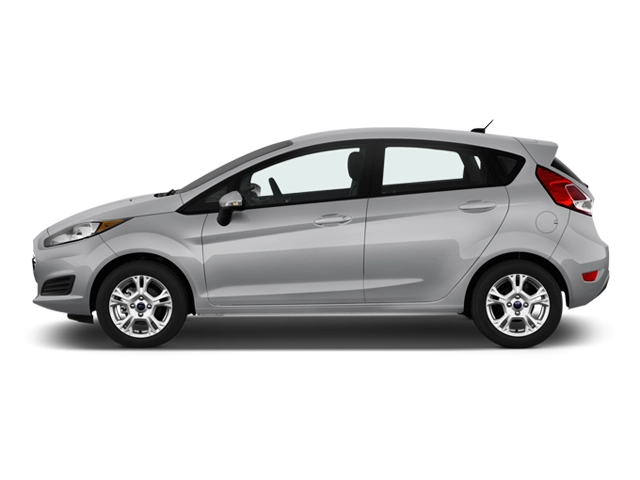2012 Ford Fiesta Owner's Manual

Table of Contents
2012 Ford Fiesta Overview
Introduction
The 2012 Ford Fiesta stands out as a vibrant and sporty subcompact car designed for those seeking a blend of efficiency and fun. With its distinctive design, advanced technology, and engaging driving dynamics, the Fiesta was engineered to appeal to a youthful audience, all while providing practicality for everyday use. Available in sedan and hatchback styles, it balances style with functionality, making it a top choice in its segment.
Powertrains
The 2012 Fiesta offers a spirited driving experience thanks to its peppy 1.6-liter four-cylinder engine, which generates 120 horsepower and 112 lb-ft of torque. This engine is paired with either a five-speed manual transmission or a six-speed dual-clutch automatic, providing smooth shifts and a fun driving experience. With impressive fuel efficiency ratings, the Fiesta achieves up to an EPA-estimated 29 mpg city and 39 mpg highway, making it an economical option for both urban and long-distance driving.
Trims
The Fiesta comes in several well-equipped trims, including the base S, SE, Titanium, and the sporty SES. Each trim level enhances the Fiesta's appeal with features like upgraded audio systems, advanced connectivity options, and stylish interior finishes. The Titanium trim, in particular, stands out with high-end features such as leather upholstery and premium sound systems, showcasing the car's versatility and capability to cater to various preferences.
Features
Equipped with a range of modern features, the 2012 Ford Fiesta prioritizes driver and passenger comfort. Standard offerings include a sync voice-activated communication system, a USB port, and a variety of optional gadgets like navigation and a rearview camera. Safety is also a concern, with multiple airbags, stability control, and a sturdy frame providing peace of mind for all occupants.
Owners Manual
The 2012 Ford Fiesta owner's manual is a comprehensive guide that provides essential information about the vehicle, from maintenance schedules to troubleshooting tips. It serves as an invaluable resource for owners, detailing operating instructions, safety guidelines, and FAQs that help maximize the Fiesta's enjoyment and longevity. The manual ensures that every drive is informed and enjoyable, enhancing the overall ownership experience.
User manual download
The Ford Fiesta owner manual for the 2012 model year is to be found in PDF downloadable format on this page. The owner manual for the model year 2012 is free and in English, but the repair manuals are usually not easy to get and may cost more.
Manual Questions
Fill the form below and someone will help you!

